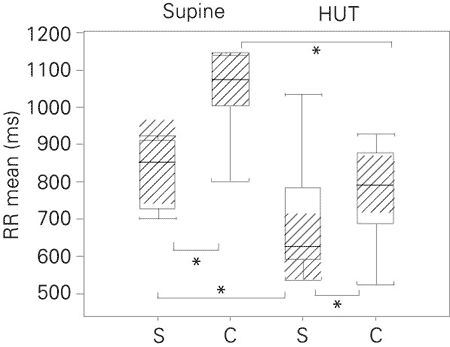The purpose of the present study was to determine if autonomic heart rate modulation, indicated by heart rate variability (HRV), differs during supine rest and head-up tilt (HUT) when sedentary and endurance-trained cyclists are compared. Eleven sedentary young men (S) and 10 trained cyclists (C) were studied. The volunteers were submitted to a dynamic ECG Holter to calculate HRV at rest and during a 70º HUT. The major aerobic capacity of athletes was expressed by higher values of <img src="/img/revistas/bjmbr/v38n4/Vo.gif">at anaerobic threshold and peak conditions (P < 0.05). At rest the athletes had lower heart rates (P < 0.05) and higher values in the time domain of HRV compared with controls (SD of normal RR interval, SDNN, medians): 59.1 ms (S) vs 89.9 ms (C), P < 0.05. During tilt athletes also had higher values in the time domain of HRV compared with controls (SDNN, medians): 55.7 ms (S) vs 69.7 ms (C), P < 0.05. No differences in power spectral components of HRV at rest or during HUT were detected between groups. Based on the analysis of data by the frequency domain method, we conclude that in athletes the resting bradycardia seems to be much more related to changes in intrinsic mechanisms than to modifications in autonomic control. Also, HUT caused comparable changes in sympathetic and parasympathetic modulation of the sinus node in both groups.
Endurance; Power spectral analysis; Heart rate variability; Autonomic heart rate modulation; Training bradycardia; Orthostatic stress




